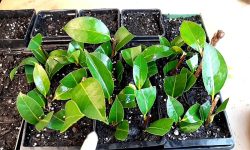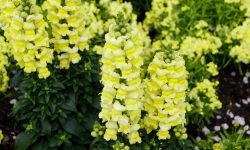Pink flowers have a timeless charm, brightening gardens and homes with their delicate hues. From soft pastels to vibrant fuchsias, these blooms captivate flower lovers everywhere.
In this guide, we explore 28 of the most stunning pink flowers, featuring detailed pictures and their names. Whether you are a gardener, florist, or simply an admirer, this list offers inspiration for every floral enthusiast.
Discover each flower’s unique beauty, learn how to identify them, and get inspired to add these gorgeous pink varieties to your collection.
Most Stunning Pink Flowers with Names
Hyacinths (Hyacinthus orientalis)
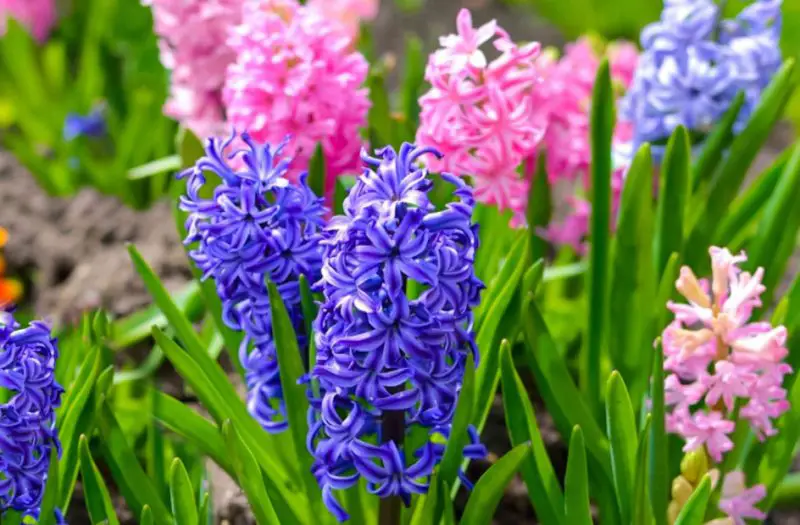
Hyacinths are spring-blooming bulbs known for their dense clusters of bell-shaped flowers and sweet fragrance. Pink hyacinths are especially popular in gardens for their vibrant color and ability to bring freshness to early spring landscapes. They typically bloom in early to mid-spring, brightening flower beds after winter.
Hyacinths can be identified by their compact flower spikes, growing 6–12 inches tall, with strap-like green leaves surrounding the base. The densely packed, bell-shaped flowers emit a strong, pleasant fragrance, making them ideal for borders, pots, or indoor forcing.
These bulbs thrive in USDA hardiness zones 4–8. Plant in well-draining soil, in full sun to partial shade. Water moderately, and avoid waterlogging. After blooming, allow the foliage to die back naturally to nourish the bulbs for the next season.
Oriental Lily (Lilium orientalis)
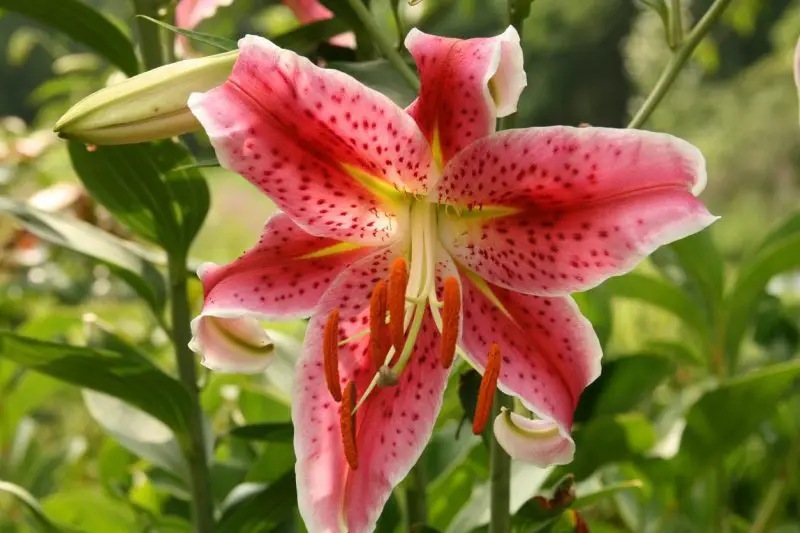
Oriental lilies are renowned for their large, showy flowers with a strong, sweet scent. Pink varieties often have darker spots on the petals, adding depth and visual interest to gardens. They bloom in mid to late summer, attracting pollinators like bees and butterflies.
These lilies can be recognized by their tall, upright stems reaching up to 36 inches, with multiple trumpet-shaped flowers. The glossy green leaves are arranged alternately along the stem, and the flowers’ fragrance is highly aromatic, especially in the evening.
They grow best in USDA hardiness zones 4–9. Plant bulbs in well-draining soil with full sun exposure. Mulch to retain moisture, water regularly during dry periods, and stake tall varieties to prevent flopping. Deadhead spent blooms to encourage more flowers.
China Asters (Callistephus chinensis)
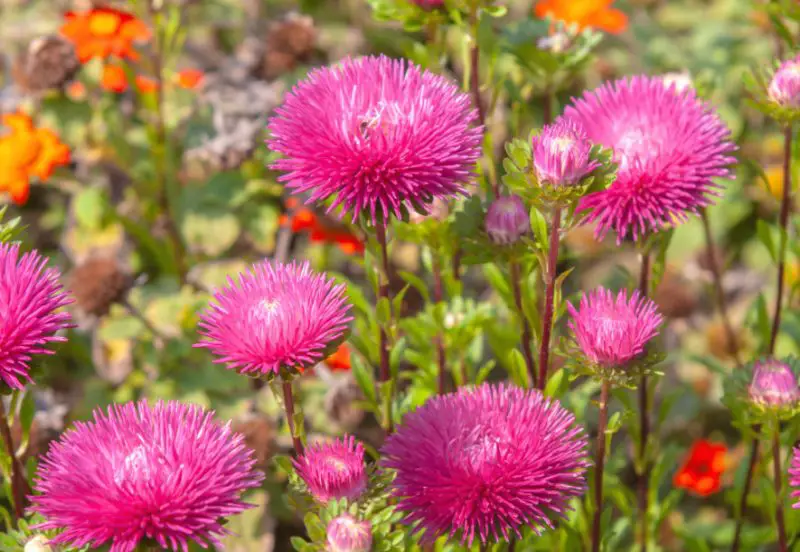
China asters are annual flowers prized for their daisy-like blooms and wide range of colors, including soft and vibrant pinks. They bloom from summer to fall, providing continuous color to borders, containers, and flower beds.
They are identified by their upright, bushy growth, reaching 12–36 inches tall, with narrow, lance-shaped leaves. The flower heads have a central yellow disk surrounded by numerous ray petals, giving a full and cheerful appearance.
China asters thrive in USDA hardiness zones 3–10. Sow seeds indoors 6–8 weeks before the last frost, or direct sow outdoors after frost. They prefer well-draining soil with full sun. Water moderately and remove faded flowers to prolong blooming. Fertilize lightly to encourage larger, vibrant blooms.
Cosmos (Cosmos bipinnatus)

Pink cosmos are delicate, airy annuals with daisy-like flowers on tall, slender stems. They bloom from summer to early fall, attracting butterflies and beneficial insects, and are excellent for naturalized garden settings.
These plants have finely divided, feathery foliage and long stems that can reach 3–6 feet. Flowers range from pale pink to deep rose, with a yellow central disk. The light, graceful appearance makes them ideal for meadow-style gardens.
Cosmos grows well in USDA hardiness zones 2–11. Plant in full sun with well-draining soil. They are drought-tolerant but benefit from occasional watering. Deadhead spent flowers to encourage continuous blooming. Avoid over-fertilizing, which can reduce flower production.
Gomphrena (Gomphrena globosa)
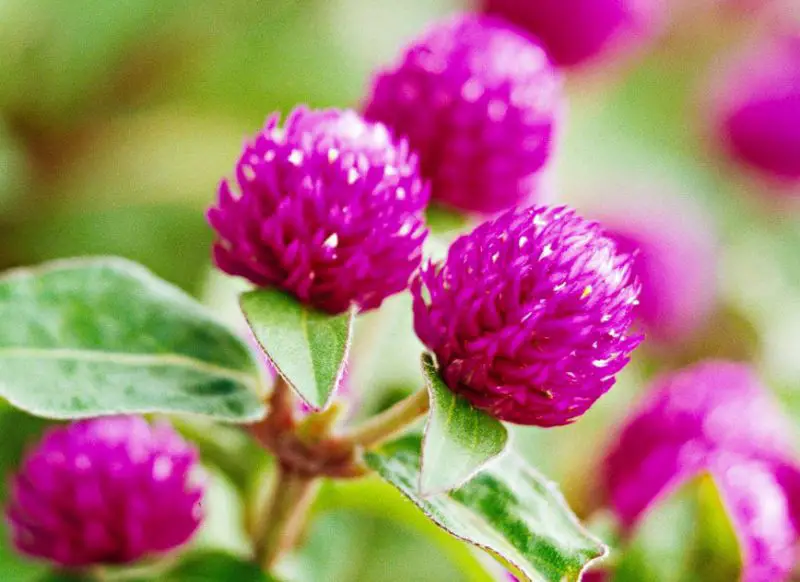
Pink gomphrena, also called globe amaranth, is a heat-loving annual with round, clover-like flower heads that last long in the garden and as cut or dried flowers. They bloom from mid-summer to frost.
Gomphrena plants grow 12–24 inches tall, with narrow, lance-shaped leaves and papery, globe-shaped flowers. Their vibrant pink color holds well even when dried, making them popular for floral arrangements.
They thrive in USDA hardiness zones 2–11. Plant in full sun with well-drained soil. Water regularly but allow soil to dry slightly between watering. Deadhead flowers to encourage more blooms and prevent self-seeding. They are low-maintenance and tolerant of heat and humidity.
Peonies (Paeonia spp.)
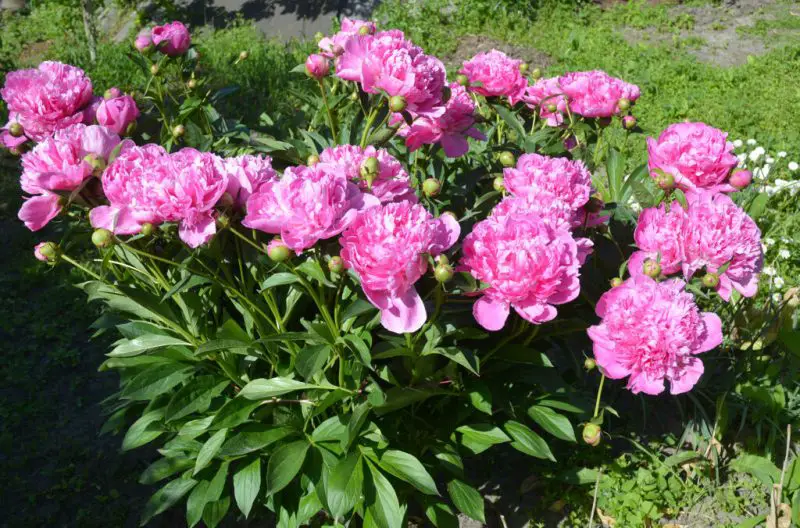
Peonies are perennial plants prized for their large, lush, and fragrant blooms. Pink peonies are particularly popular in gardens and floral arrangements for their soft, romantic appearance. They typically bloom in late spring to early summer, adding elegance to borders and beds.
These plants feature deep green, lobed foliage and thick stems that support large, ruffled flower heads. The blooms can range from pale blush to vibrant pink, often with a subtle fragrance that attracts pollinators. Peonies are long-lived perennials, sometimes thriving for decades in the same location.
Peonies grow best in USDA hardiness zones 3–8. Plant in full sun with well-draining soil, adding compost for nutrients. Water deeply during dry spells, and stake taller varieties to prevent stems from flopping. Cut back foliage after the first frost to reduce disease risk.
Petunias (Petunia spp.)
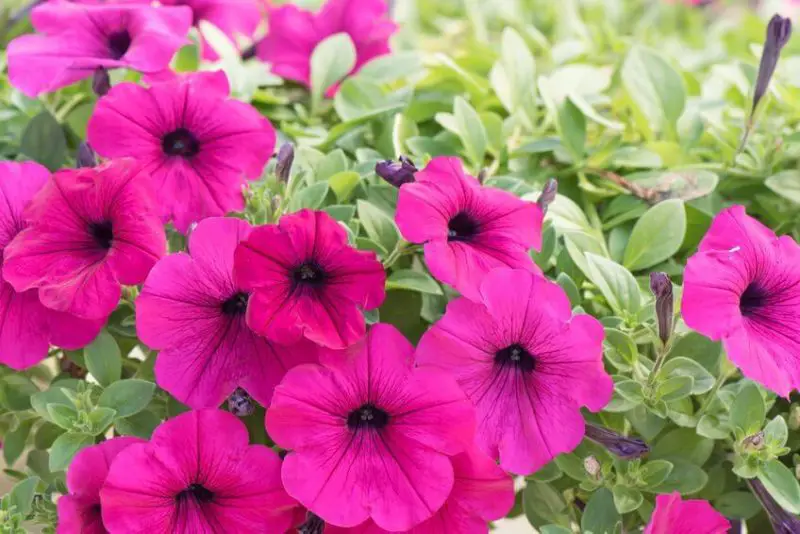
Petunias are versatile annuals with trumpet-shaped flowers in a wide range of colors, including vivid pinks. They bloom from spring through fall, providing continuous color in garden beds, containers, and hanging baskets.
Petunias have a bushy growth habit with slightly sticky stems and ovate leaves. Flowers are often large and showy, with patterns ranging from solid pink to striped or veined variations. Deadheading spent flowers promotes longer bloom periods.
Petunias thrive in USDA hardiness zones 10–11 as perennials, but are grown as annuals in most regions. They prefer full sun and well-draining soil. Water regularly but avoid overwatering, and fertilize every 2–3 weeks for abundant blooms.
Pink Rose (Rosa spp.)
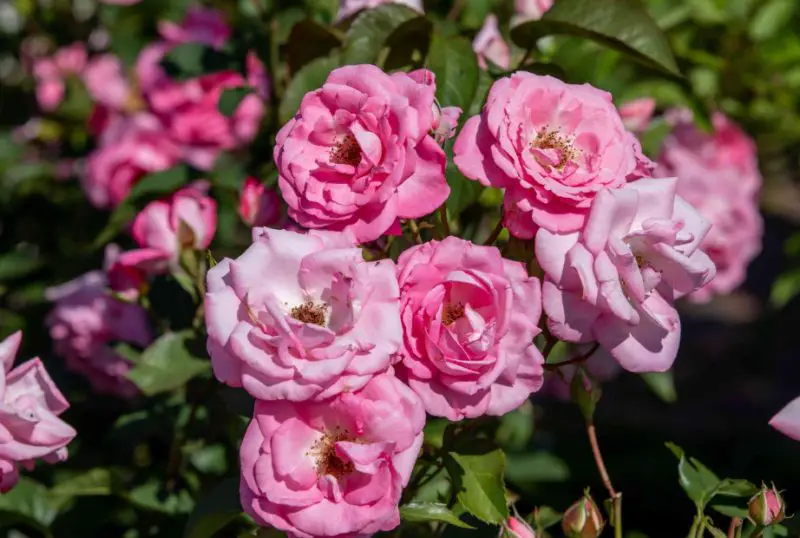
Pink roses are classic garden favorites known for their layered petals and timeless beauty. They bloom repeatedly from late spring through fall, offering fragrance and color to gardens and landscapes.
Roses are identifiable by their thorny stems, glossy green leaves, and clustered flower heads. Pink varieties range from pale blush to deep rose, with many hybrid types available for varying sizes and scents. Roses attract bees, butterflies, and other pollinators.
They thrive in USDA hardiness zones 5–9, depending on the variety. Plant in full sun with rich, well-draining soil. Water deeply at the base, mulch to retain moisture, prune annually to shape the plant and remove dead wood, and treat for pests as needed.
Snapdragon (Antirrhinum majus)
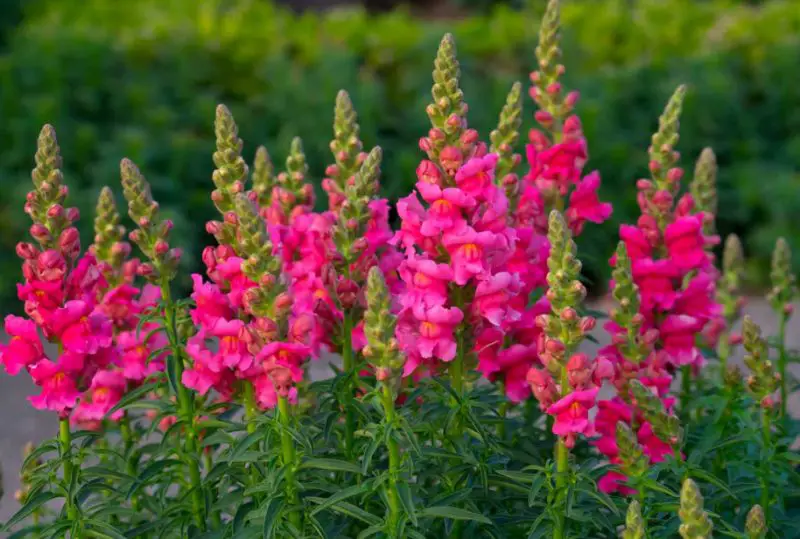
Snapdragons are tall, elegant annuals with tubular, dragon-shaped flowers that come in a range of pink shades. They bloom from spring to fall in cooler climates and add vertical interest to garden beds.
These plants have erect stems with lance-shaped leaves and tightly packed flower spikes. Flowers open sequentially from bottom to top, allowing long-lasting blooms. They are excellent for cut flowers and border displays.
Snapdragons grow well in USDA hardiness zones 7–10. Plant in full sun with fertile, well-draining soil. Water moderately, and deadhead spent flowers to encourage continual blooming. Stake taller varieties if necessary.
Spirea (Spiraea spp.)
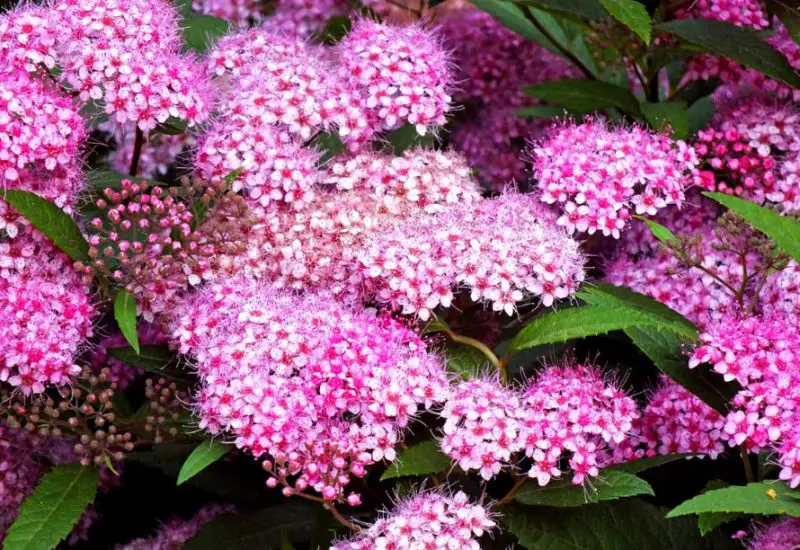
Spirea is a deciduous shrub known for its cascading clusters of small pink flowers. It blooms in late spring to early summer and is valued for its low maintenance and ornamental appeal in landscapes.
Spirea has dense, arching stems with small, toothed leaves. Flowers are tiny, clustered, and often form rounded or flat-topped sprays that create a soft, billowy effect. The pink varieties can vary from light blush to vibrant rose tones.
They thrive in USDA hardiness zones 4–8. Plant in full sun to partial shade with well-draining soil. Water regularly during establishment, prune after flowering to maintain shape, and mulch to conserve moisture.
Tulips (Tulipa spp.)

Tulips are iconic spring-blooming bulbs known for their simple yet striking cup-shaped flowers. Pink tulips are widely admired for their soft and cheerful color, making them ideal for garden beds, borders, and containers.
They can be identified by their smooth, elongated leaves and upright stems ranging from 6 to 24 inches tall. The flowers have a symmetrical, cup-like shape, and some varieties feature subtle gradations of pink or a bicolor pattern. Tulips are generally low-maintenance and naturalize well in clusters.
Tulips grow best in USDA hardiness zones 3–8. Plant bulbs in well-draining soil in full sun. Water after planting and during dry spells, but avoid overwatering. Remove spent flowers promptly to prevent seed formation, and allow foliage to die back naturally to nourish the bulbs for the next season.
Zinnias (Zinnia elegans)
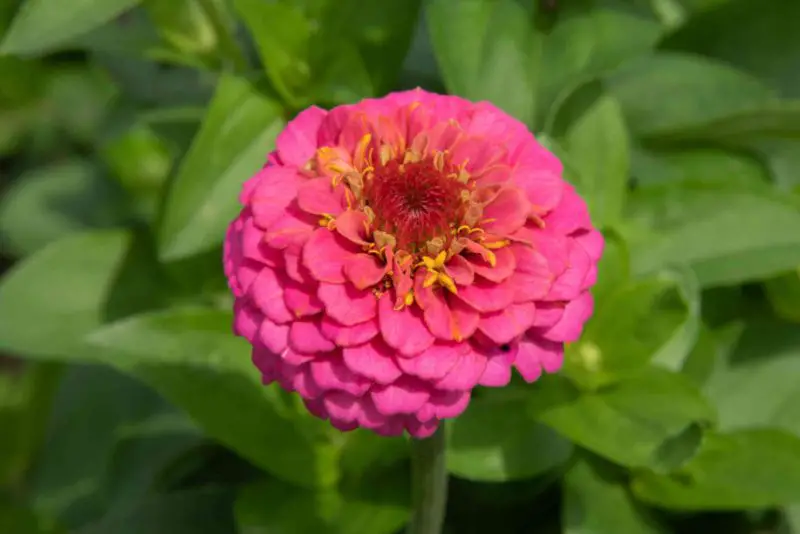
Zinnias are vibrant annuals prized for their long-lasting, daisy-like flowers and wide range of colors, including vivid pink. They bloom from summer through frost, attracting butterflies and pollinators to the garden.
They have upright stems with ovate, rough-textured leaves. Flowers can be single or double and range in size from small to large, creating bold, colorful displays. Zinnias are heat-tolerant and ideal for borders, containers, and cut flowers.
Zinnias thrive in USDA hardiness zones 3–10. Plant in full sun with well-draining soil. Water regularly at the base to avoid wetting foliage, which can lead to disease. Deadhead spent flowers to encourage continuous blooming, and thin seedlings to promote air circulation.
Carnations (Dianthus caryophyllus)
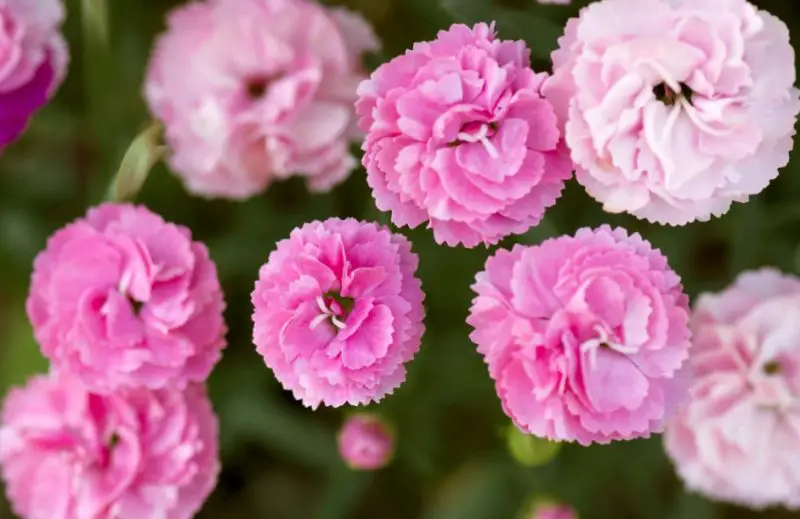
Carnations are perennial or biennial flowers valued for their frilled petals and pleasant fragrance. Pink carnations are particularly popular in bouquets and garden displays for their soft, romantic appearance.
These plants feature narrow, gray-green leaves and erect stems that can reach 12–36 inches. The flowers are tightly clustered with frilly edges, often in shades of pale pink to deep rose. Carnations attract pollinators and are suitable for borders and rock gardens.
They grow best in USDA hardiness zones 5–9. Plant in full sun with well-draining, slightly alkaline soil. Water moderately and avoid overhead watering to reduce disease risk. Remove faded flowers to encourage new blooms, and fertilize every 6–8 weeks during the growing season.
Coneflower (Echinacea purpurea)
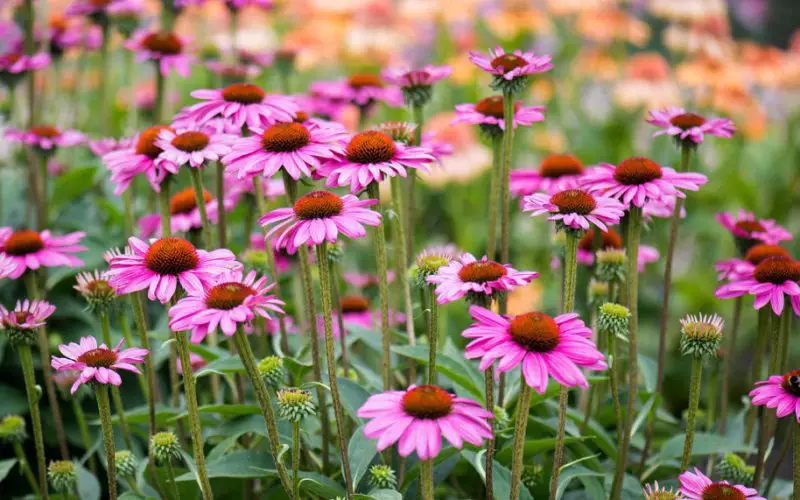
Pink coneflowers are hardy perennials known for their daisy-like flowers with prominent central cones. They bloom from midsummer to early fall and attract butterflies, bees, and other pollinators.
These plants have rough, lance-shaped leaves and tall, sturdy stems that reach 2–4 feet. The petals are soft pink, radiating from a spiky, brownish-orange central cone. Coneflowers are drought-tolerant and easy to grow in a variety of garden settings.
Coneflowers thrive in USDA hardiness zones 3–9. Plant in full sun with well-draining soil. Water during dry periods, mulch to retain moisture, and deadhead spent blooms to extend flowering. They are low-maintenance and highly resistant to pests and diseases.
Dahlia (Dahlia spp.)
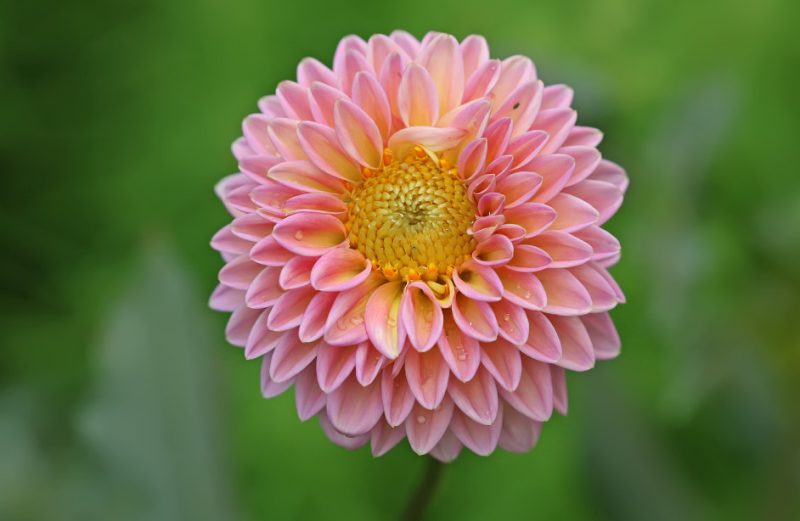
Dahlias are tuberous perennials admired for their showy, vibrant flowers in a wide range of pink shades. They bloom from mid-summer until the first frost, providing long-lasting color in garden beds and containers.
Dahlias have divided, dark green foliage and strong, upright stems. Flower heads can vary in size from small pom-poms to large dinner-plate blooms, often with multiple layers of petals. They are excellent for cut flowers and floral arrangements.
They grow best in USDA hardiness zones 8–11, or as annuals in cooler zones. Plant tubers in full sun with rich, well-draining soil. Water regularly, support taller varieties with stakes, deadhead spent blooms, and lift tubers for overwintering in cold climates.
Geranium (Pelargonium spp.)

Geraniums are popular annual or perennial plants known for their vibrant pink blooms and rounded leaf clusters. They bloom from spring to fall, providing continuous color for garden beds, containers, and hanging baskets.
Geraniums have slightly fuzzy, rounded leaves with distinct veining. The flowers are clustered in tight umbels, ranging from soft pastel pink to deep rose. They are drought-tolerant and attract pollinators such as bees and butterflies.
Geraniums grow best in USDA hardiness zones 9–11 as perennials, but are usually grown as annuals in cooler climates. Plant in full sun to partial shade with well-draining soil. Water moderately, avoid overwatering, and remove faded blooms to encourage prolonged flowering.
Hibiscus (Hibiscus rosa-sinensis)
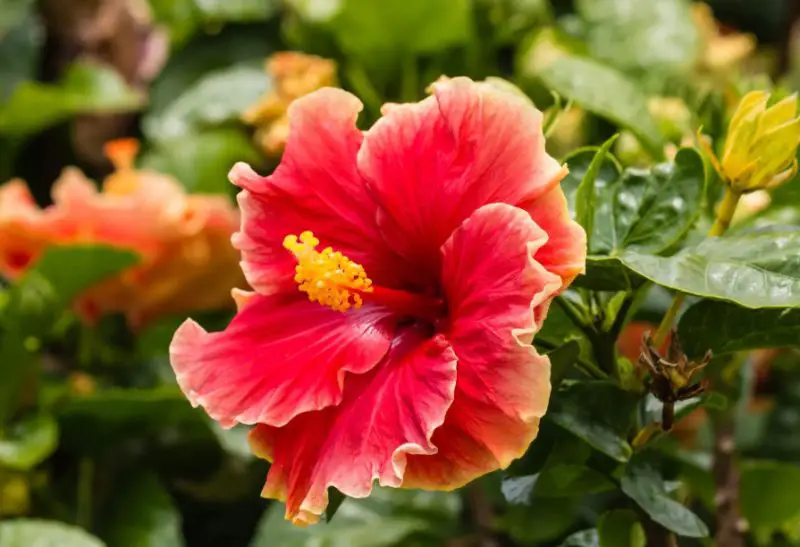
Hibiscus is a tropical shrub valued for its large, trumpet-shaped pink flowers. They bloom from summer to fall, adding an exotic touch to gardens, patios, and containers.
These plants have glossy, dark green leaves and strong stems that support large, showy flowers up to 6 inches in diameter. Pink varieties often feature a darker central eye, enhancing their visual appeal. Hibiscus attracts hummingbirds and butterflies.
Hibiscus grows best in USDA hardiness zones 9–11. Plant in full sun with rich, well-draining soil. Water regularly, especially during dry periods, and fertilize monthly with a balanced fertilizer. Prune lightly to maintain shape and encourage more blooms.
Hollyhock (Alcea rosea)
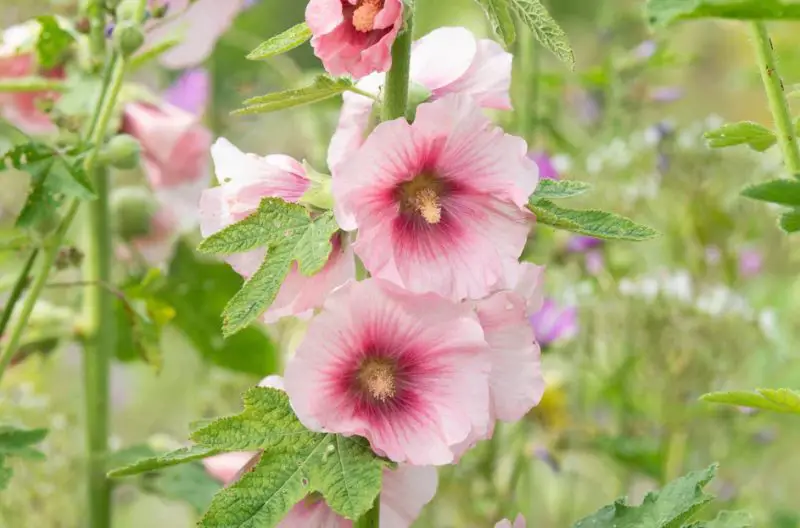
Hollyhocks are tall biennials or short-lived perennials known for their towering spikes and charming pink flowers. They bloom in midsummer, creating dramatic vertical accents in gardens.
These plants feature long, erect stems that can reach 6–8 feet, with large, rounded leaves and densely packed, cup-shaped flowers. Pink varieties range from pale blush to deep rose, and flowers attract bees and other pollinators.
Hollyhocks thrive in USDA hardiness zones 3–9. Plant in full sun with well-draining soil. Water moderately, and stake tall plants to prevent flopping. Remove spent flowers to prolong bloom and reduce disease risk. Mulch to conserve moisture and control weeds.
Hydrangea (Hydrangea macrophylla)
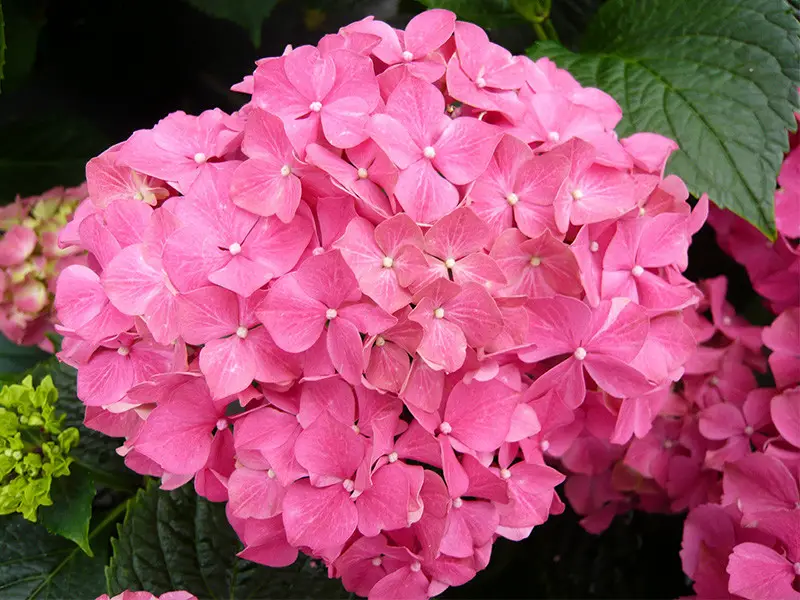
Hydrangeas are deciduous shrubs admired for their large, ball-shaped clusters of pink flowers. They bloom from late spring through summer, offering long-lasting color for borders, foundation plantings, and containers.
Hydrangeas have broad, serrated leaves and sturdy stems that support rounded flower heads. Pink varieties often require slightly alkaline soil to maintain color, and blooms range from soft blush to bright rose. They attract pollinators such as bees and butterflies.
They grow best in USDA hardiness zones 5–9. Plant in partial sun to full shade with moist, well-draining soil. Water regularly, especially during dry periods. Fertilize in spring and prune after flowering to maintain shape and encourage strong growth.
Bleeding Heart (Dicentra spectabilis)
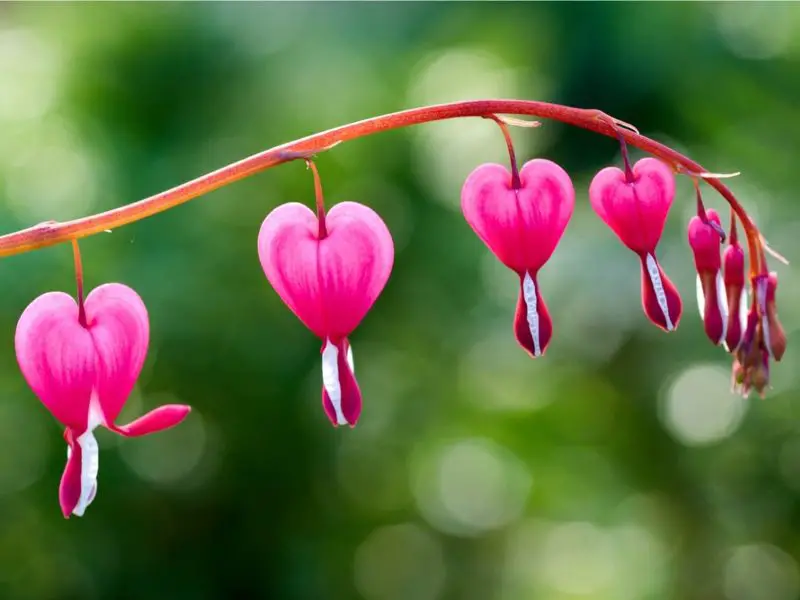
Bleeding heart is a perennial with delicate, heart-shaped pink flowers that dangle gracefully from arching stems. They bloom in spring, adding charm and elegance to shaded garden areas.
The plants have fern-like, finely divided foliage and stems that reach 24–36 inches. Flowers are pendulous and rosy pink, often with a small white tip. Bleeding hearts create a soft, romantic look in woodland gardens or shaded borders.
They thrive in USDA hardiness zones 3–9. Plant in partial to full shade with rich, moist, well-draining soil. Water regularly and mulch to retain moisture. Cut back foliage after blooming to promote healthy growth for the next season.
Camellia (Camellia japonica)
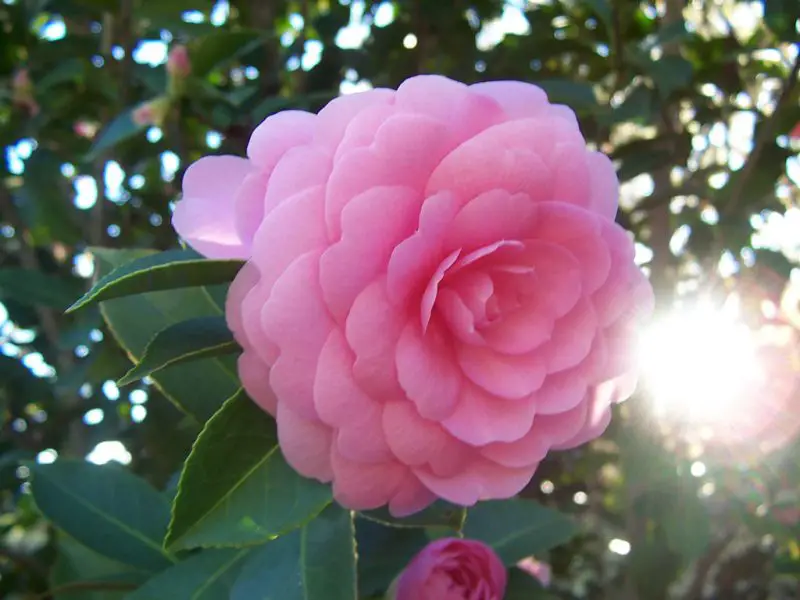
Camellias are evergreen shrubs celebrated for their glossy leaves and large, rose-like pink flowers. They bloom in late winter to early spring, bringing vibrant color to shaded garden areas when few other plants are flowering.
They are identified by their shiny, dark green leaves and large, multi-petaled flowers that range from pale pink to deep rose. Camellias have a dense, bushy growth habit and attract pollinators such as bees.
Camellias thrive in USDA hardiness zones 7–9. Plant in partial shade with acidic, well-draining soil. Water regularly, especially during dry periods, and mulch to retain moisture. Prune lightly after flowering to maintain shape and remove dead wood.
Foxglove (Digitalis purpurea)
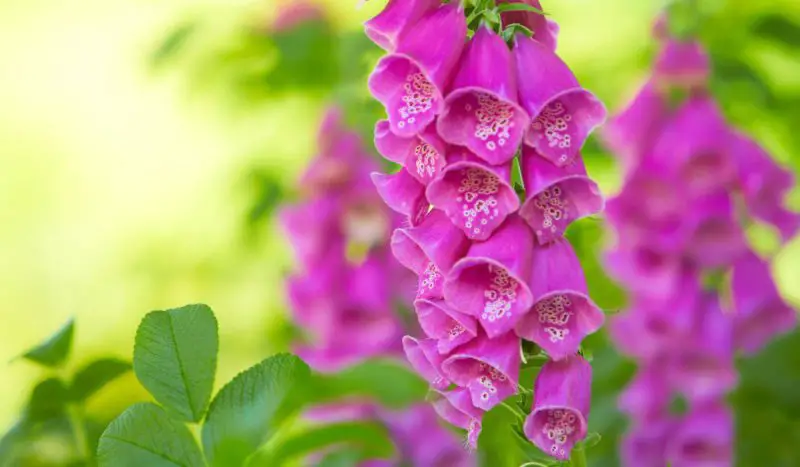
Foxgloves are tall biennial or short-lived perennial plants known for their striking tubular flowers. Pink varieties bloom in late spring to early summer and create dramatic vertical accents in borders and cottage gardens.
They feature tall spikes of tubular flowers arranged along the stem, reaching heights of 2–5 feet. Leaves are large, lance-shaped, and slightly hairy. The pendulous flowers attract hummingbirds and bees.
Foxgloves grow best in USDA hardiness zones 4–9. Plant in partial sun to light shade with well-draining soil. Water regularly to keep soil moist. Remove spent flowers to prevent self-seeding if desired, and handle with care, as all parts of the plant are toxic if ingested.
Magnolia (Magnolia × soulangeana)
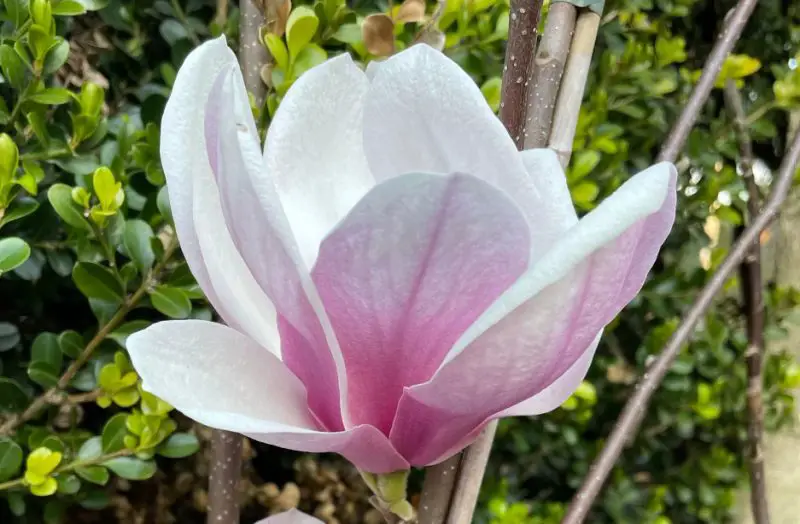
Magnolias are deciduous shrubs or small trees admired for their large, fragrant, tulip-shaped pink flowers. They bloom in early spring before the leaves emerge, creating a striking display in gardens and landscapes.
They can be identified by their broad, glossy leaves and large, cup-shaped flowers, often 6–12 inches across, in shades of pink with white highlights. Magnolias attract pollinators like bees and add architectural interest to any garden.
They thrive in USDA hardiness zones 5–9. Plant in full sun to partial shade with well-draining, slightly acidic soil. Water regularly during dry periods, mulch to conserve moisture, and prune after flowering to maintain shape and remove dead or damaged branches.
Orchid (Phalaenopsis spp.)
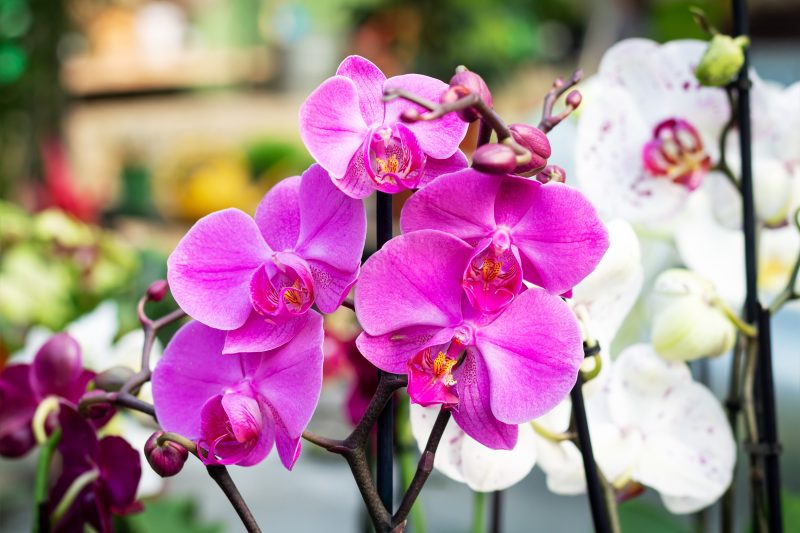
Phalaenopsis orchids are popular houseplants with long-lasting pink blooms. They bloom indoors or in tropical gardens, adding elegance and color to interiors or warm, shaded outdoor spaces.
These orchids have broad, fleshy leaves and long arching flower spikes bearing multiple blooms. Pink varieties range from soft blush to vivid magenta, and flowers can last several weeks. Orchids attract attention for their exotic beauty rather than for outdoor pollinators.
Phalaenopsis orchids thrive in USDA hardiness zones 10–11 or as indoor plants elsewhere. Plant in well-draining orchid mix in indirect light. Water when the medium is almost dry, avoid letting roots sit in water, and fertilize lightly every 2–4 weeks during the growing season.
Azalea (Rhododendron spp.)
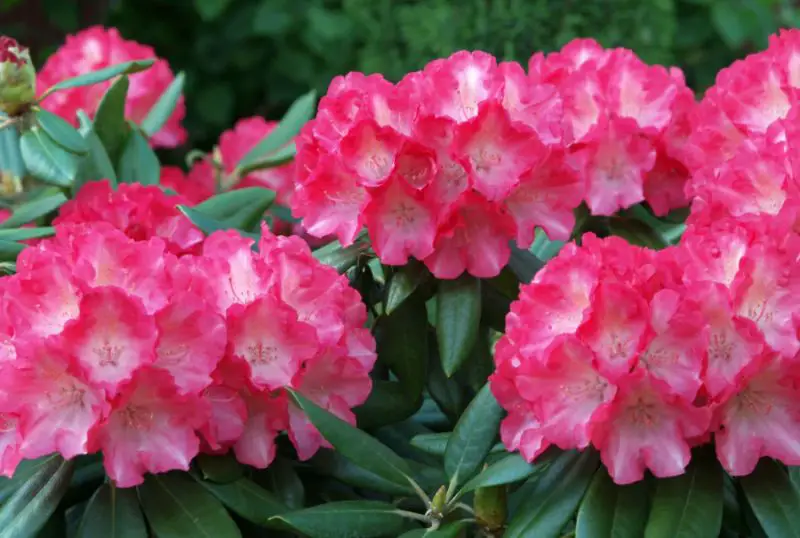
Azaleas are deciduous or evergreen shrubs with vibrant clusters of pink flowers that bloom in spring. They add color and texture to woodland gardens, borders, and foundation plantings.
Azaleas have small, glossy leaves and clusters of funnel-shaped flowers in shades from pale pink to bright rose. They attract pollinators like bees and butterflies and provide seasonal interest with their blooms.
They thrive in USDA hardiness zones 6–9. Plant in partial shade with acidic, well-draining soil. Water regularly and mulch to maintain soil moisture. Prune after flowering to shape the shrub and remove spent blooms, and protect from strong winds.
Cherry Blossom (Prunus serrulata)
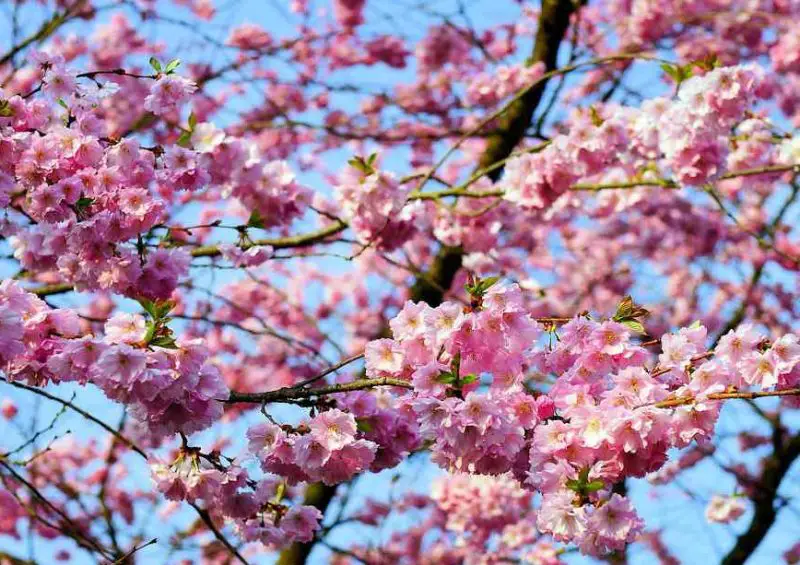
Cherry blossoms are deciduous trees famous for their delicate pink flowers that bloom in early spring. They create stunning displays in gardens, parks, and along streets, symbolizing renewal and beauty.
These trees feature smooth bark, ovate serrated leaves, and clusters of small, pale to vibrant pink flowers. The blossoms often have a subtle fragrance and attract pollinators such as bees. Cherry blossoms are widely planted as ornamental trees for their aesthetic appeal.
They thrive in USDA hardiness zones 5–8. Plant in full sun with well-draining soil. Water regularly, especially during dry periods, and mulch to retain moisture. Prune after flowering to maintain shape and remove dead or crossing branches.
Lotus (Nelumbo nucifera)
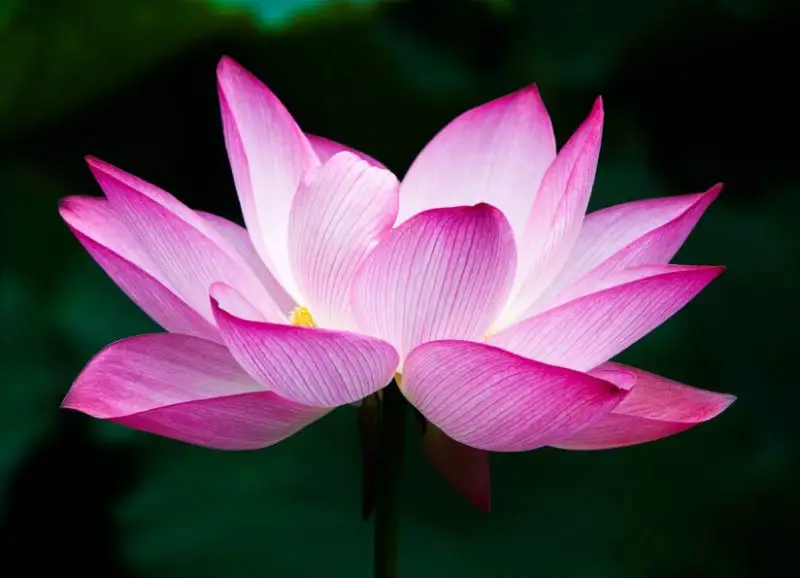
Lotus is an aquatic perennial known for its large, fragrant pink flowers that rise above the water on long stems. They bloom from mid-summer to early fall and are commonly grown in ponds, water gardens, or containers.
Lotus plants have large, round leaves that float on or rise above the water, and showy pink flowers with a central yellow seed pod. They attract pollinators such as bees and provide a serene, tropical look to water features.
They grow best in USDA hardiness zones 4–10, depending on variety. Plant rhizomes in full sun in shallow water or containers with rich, loamy soil. Keep water levels consistent and fertilize regularly during the growing season. Remove spent blooms to encourage continuous flowering.
FAQs About Pink Flowers
What are the most popular pink flowers for gardens?
The most popular pink flowers include tulips, roses, peonies, camellias, hydrangeas, and cherry blossoms. These flowers are favored for their vibrant colors, long-lasting blooms, and versatility in garden designs, containers, and floral arrangements.
How do I choose the right pink flowers for my climate?
Check the USDA hardiness zones for each flower. For instance, tulips and hyacinths thrive in zones 3–8, while hibiscus and orchids prefer warmer zones 9–11. Choosing flowers suited to your climate ensures healthy growth, better blooms, and lower maintenance.
How can I extend the blooming period of pink flowers?
Deadhead spent flowers regularly to encourage new blooms. For perennials, allow foliage to naturally die back after flowering to nourish bulbs or roots. Fertilize appropriately and provide consistent watering, especially during dry spells.
What type of soil is best for pink flowers?
Most pink flowers prefer well-draining soil. Some, like azaleas and camellias, need slightly acidic soil, while dahlias and peonies thrive in rich, loamy soil. Adding compost or organic matter improves soil fertility and moisture retention.
How much sunlight do pink flowers need?
Sun requirements vary by species. Many flowers, including tulips, zinnias, cosmos, and roses, thrive in full sun. Others, like bleeding heart, camellias, and hydrangeas, prefer partial to full shade. Check each species’ preference to optimize growth and blooms.
Are pink flowers good for attracting pollinators?
Yes. Flowers like cosmos, coneflowers, petunias, roses, and hollyhocks attract bees, butterflies, and hummingbirds. Planting a variety of pink flowers ensures continuous blooms and a vibrant pollinator-friendly garden.
How should I water pink flowers?
Water needs depend on the species. Most annuals and perennials prefer moderate watering with soil kept consistently moist but not waterlogged. Bulbs like tulips and hyacinths require watering during active growth, while drought-tolerant plants like gomphrena and zinnias need less frequent irrigation.
Can pink flowers be grown indoors?
Some pink flowers, such as orchids, geraniums, and hibiscus, can thrive indoors with proper lighting and care. Use bright, indirect sunlight, well-draining soil, and regular watering to maintain healthy indoor blooms.
How do I prevent diseases in pink flowers?
Ensure proper spacing and air circulation between plants, avoid overhead watering, and remove dead or diseased foliage. Using mulch and well-draining soil can prevent fungal infections, and choosing disease-resistant varieties helps minimize problems.
Can I use pink flowers for floral arrangements?
Absolutely. Many pink flowers, including roses, carnations, peonies, dahlias, tulips, and gomphrena, make excellent cut flowers. For longer vase life, cut blooms in the morning, remove excess leaves, and place stems in clean water with flower food.


